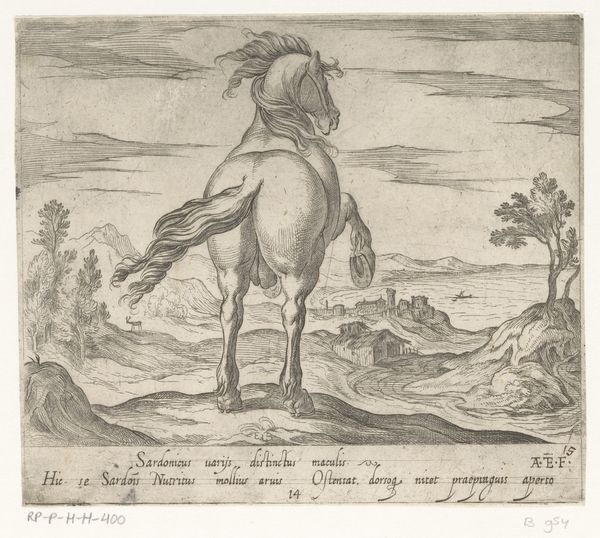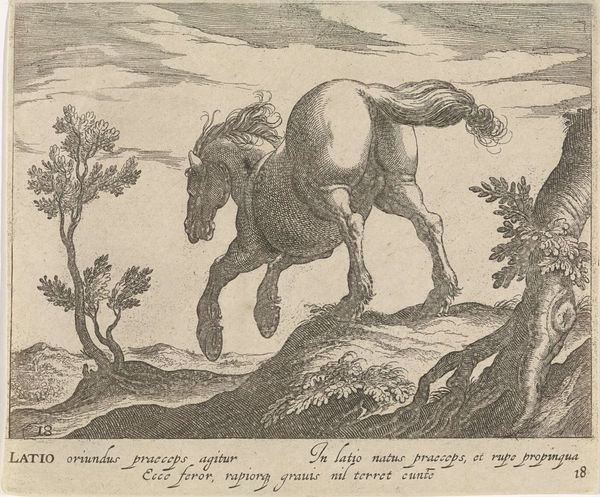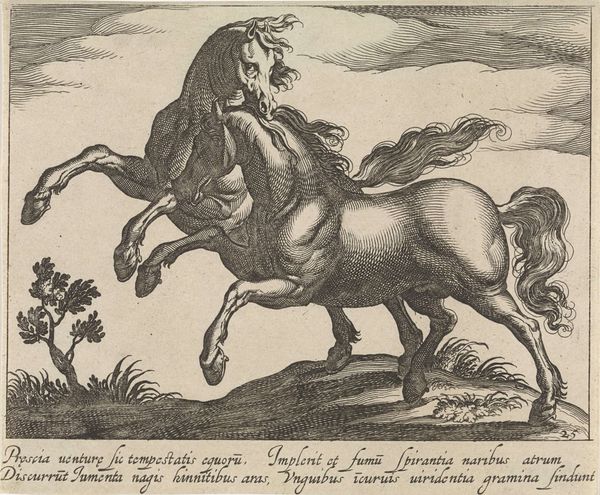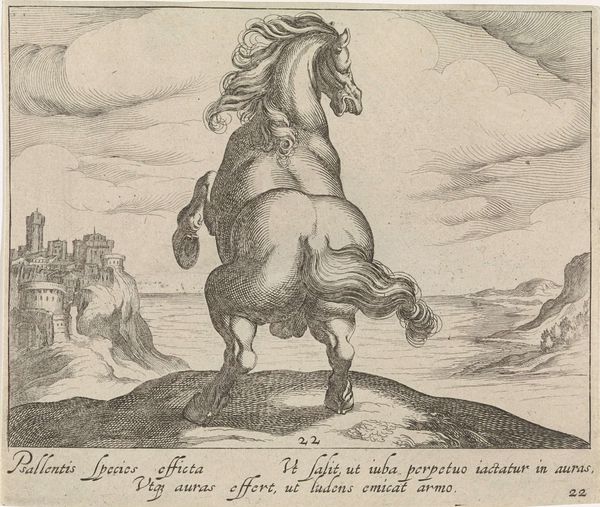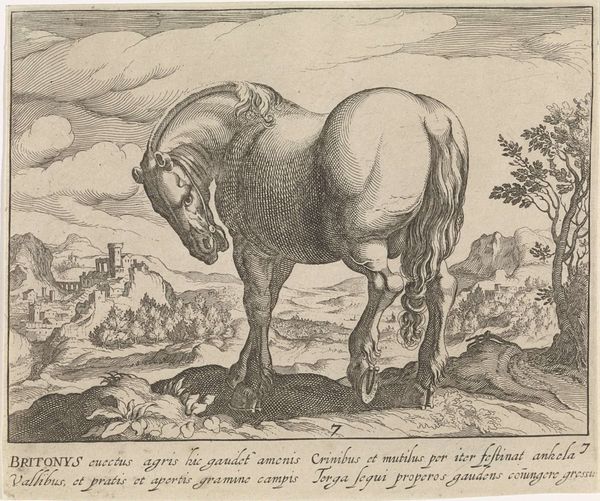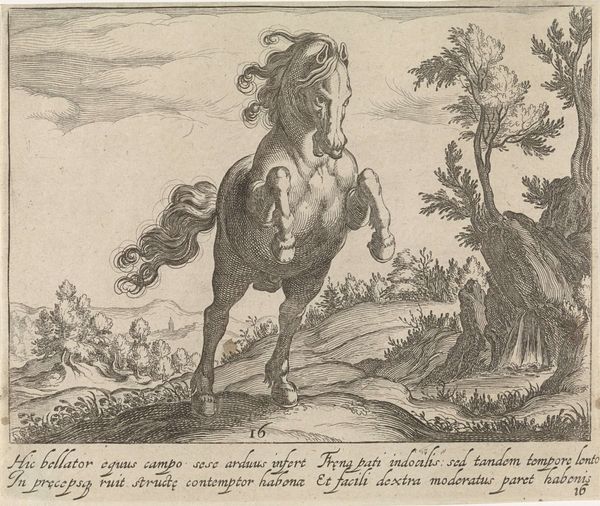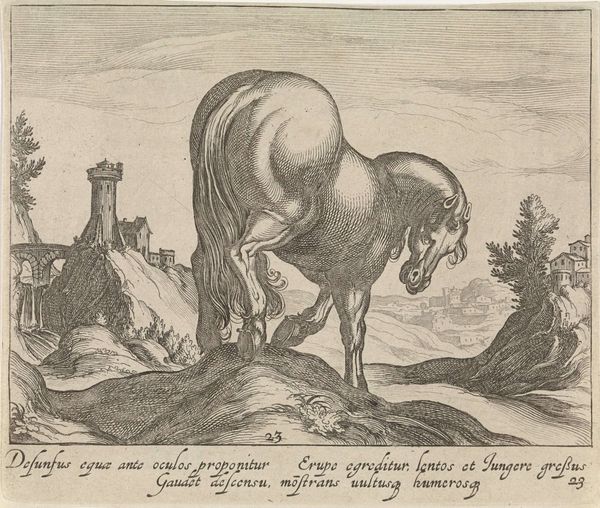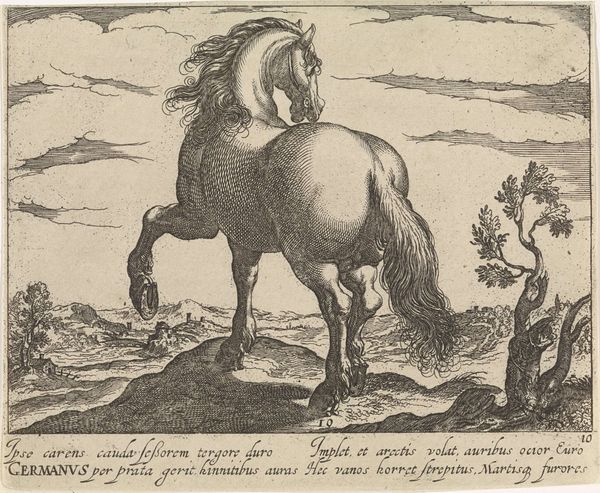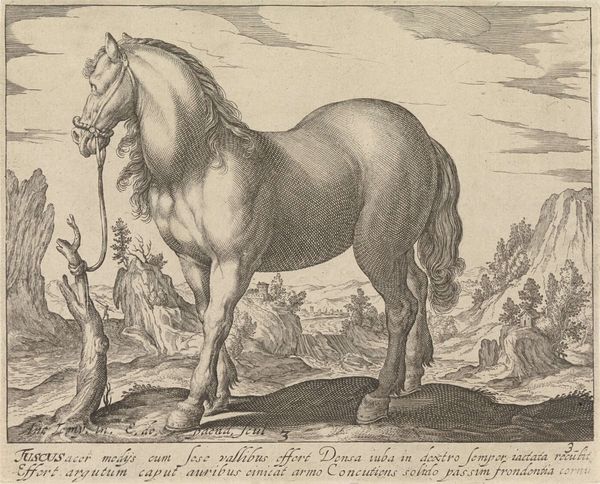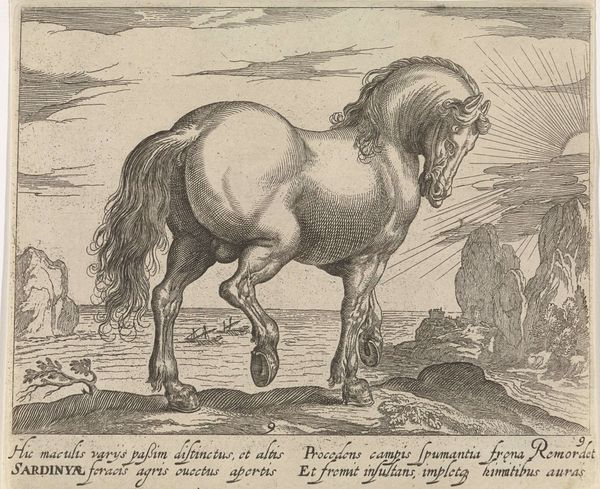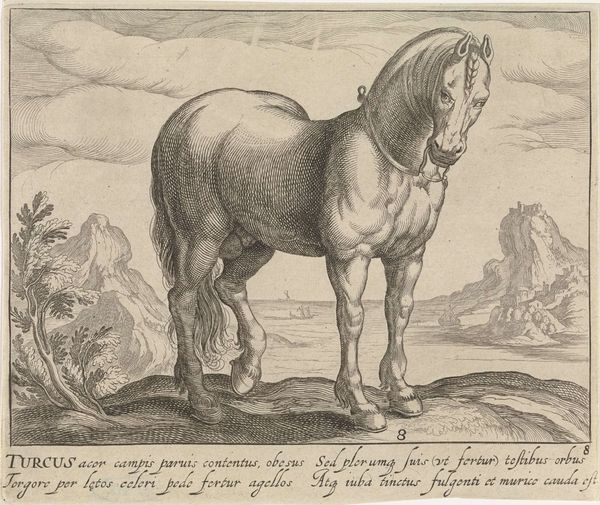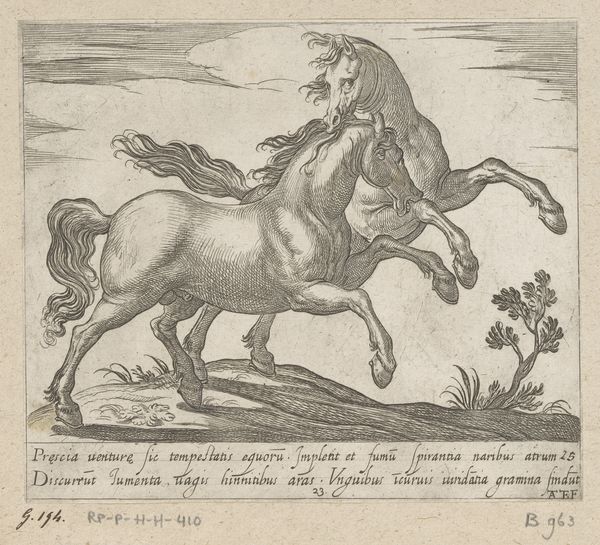
print, etching
#
baroque
#
animal
# print
#
etching
#
landscape
#
figuration
#
horse
Dimensions: height 137 mm, width 164 mm
Copyright: Rijks Museum: Open Domain
Egbert van Panderen created this print of a horse, with landscape, in the Netherlands sometime in the early 17th century. It's interesting to consider how the artist uses the image of the horse to create meaning through visual codes. The horse rearing up on its hind legs is a classical pose, often associated with power, virility, and nobility. The landscape setting further reinforces this sense of grandeur and importance. We can tell that the artist was familiar with classical art and literature, and that he was consciously drawing on these traditions to create a work that would appeal to a sophisticated audience. But this image is also interesting for what it tells us about the social conditions that shaped artistic production in the Netherlands at this time. The Dutch Republic was a wealthy and prosperous nation, and there was a growing demand for luxury goods, including art. The Rijksmuseum provides us with a glimpse into this world, showing us how artists responded to the tastes and preferences of their patrons. To understand this artwork better, we can delve deeper into the cultural and historical context in which it was made. By looking at other works of art from this period, as well as archival sources and literary texts, we can gain a richer understanding of the social and cultural forces that shaped its creation.
Comments
No comments
Be the first to comment and join the conversation on the ultimate creative platform.
